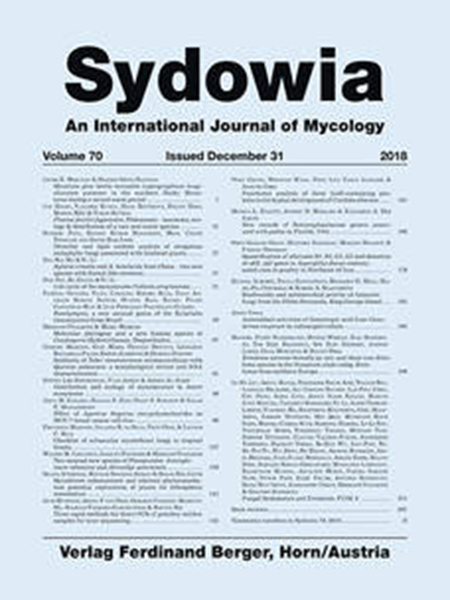
Sydowia Vol. 70 E-Book/S 185-192
Biodiversity and antimicrobial activity of Antarctic fungi from th
Download-Artikel
Artikel Nr 2390
Preis 13,50 €
Lieferstatus 

Buchbeschreibung
In: Sydowia 70, (2018): 185 - 192, ISSN 0082-0598, DOI 10.12905/0380.sydowia70-2018-0185, Published online on November 29th, 2018Biodiversity and antimicrobial activity of Antarctic fungi from the Fildes Peninsula, King George Island
Silvana Alborés, Paula Sanguiñedo, Benjamin H. Held, María Pía Cerdeiras & Robert A. Blanchette
Alborés S., Sanguiñedo P., Held B.H., Cerdeiras M.P. & Blanchette R.A. (2018) Biodiversity and antimicrobial activity of Antarctic fungi from the Fildes Peninsula, King George Island. – Sydowia 70: 185–192
Despite adverse conditions in Antarctica for life, organic materials can be successfully colonized by extremophilic microorganisms. This work describes the isolation of filamentous fungi from terrestrial and maritime habitats of King George Island, Antarctica, and the screening of their ability to produce antimicrobial compounds. A total of 44 samples were collected during the Antarctic expeditions from soil, sediments, terrestrial and marine waters and pieces of wood that had been brought into Antarctica. One hundred thirty-seven psychrotrophic fungi were isolated. Thirty-three strains selected from different samples and with different morphological characteristics were used in molecular identification and antimicrobial activity assays. The ability of all isolations to inhibit growth of different bacteria in vitro was tested using the agar plug diffusion method.
Most of the fungi identified were Ascomycota with only a few Zygomycota and no Basidiomycota isolated. Twenty-six cultures corresponded to known species. Penicillium was the most represented genus of identified fungal isolations (24 %) followed by species of Cadophora, Mortierella, Pseudogymnoascus and Neurospora. This is the first report of the presence of Aspergillus pseudodeflectus in this region. Of the isolates under study, eighteen were able to inhibit growth of at least one of the bacterial
strains used.
Keywords: antarctic fungi, biodiversity, antimicrobial activity.




